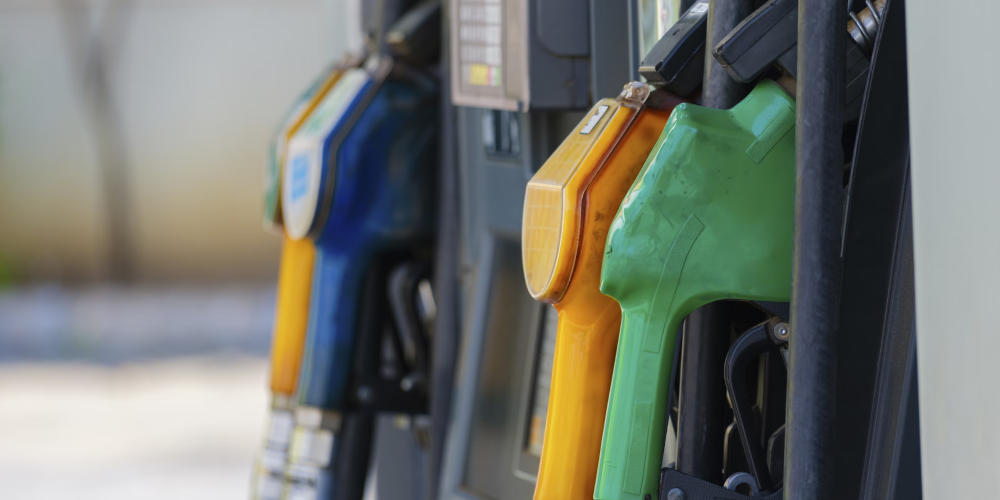When we own our vehicles, we all like to think from time to time we’re the experts in them. In fact, in certain cases you probably are – as people, cars have little quirks, foibles and workarounds that, if you’ve spent any time with them, you learn to understand and in many ways, help make a connection with your vehicle. At EASR, we notice the same little things our customers do – although, we never forget that we’ve always got more to learn about our motors, especially as revolutions in auto technology seem to rev up each year!
We service enough cars, and meet enough motorheads, to know that people have some pretty strong opinions about automobiles – and of course, we think everyone should be able to have their own thoughts and feelings about cars, but it’s always important to level the playing field. That’s why this month we’re going to bust some automobile myths – let us know if you’ve fallen for any of these motoring fables!
Manual Cars are more fuel-efficient than Automatics
Alright – if there are any older drivers reading this one, we can accept that this used to be the case, but automatic technology has improved a lot since the 80s, and their efficiency is almost the same, and in certain cases better!

Ever wondered why ‘stick-shifts’ were more efficient than their stick-less counterparts? It all has to do with ‘fluid coupling’. In short, what made manual transmissions easier on the wallet was the fact that all you had to do to change gears would be step on the clutch, choose your gear and then leave it there. Simple right? Automatic transmissions don’t have and don’t want, the ability to stay in one gear all the time so instead of a clutch pedal, they use a thick liquid that can be used to ‘slip’ between gears in lower states.
Back when this technology was a new thing, the ‘slipping’ between the gears at lower speeds would lower the fuel efficiency of the vehicle – nowadays, the fluid coupling has improved to the point where any difference is barely noticeable.
Cold engines need to ‘warm up’
Even though winter seems so far away, here’s a nice little myth to give you something to look forward to this coming snowy season.
This too is another case of ‘it used to be different’ – and be sure, if your car was built before the 90s, or you know it uses a carburettor, you should pre-heat your engine. It all had to do with the limitations of both the hardware in the engine and motor oil at the time.

Cars before the 90s generally used carburettors, a device that mixes air and fuel, which were pretty good in the right conditions, but were very inefficient when not up to temperature, and would run a mix on that was fuel heavy through the system when it was cold. One impacting problem was that back in the day, fuel intake manifolds would be made completely of metal, meaning the whole thing would have to heat up for the carbs to run efficiently.
Nowadays with fuel injection systems, these problems barely arise – however, if you like the feeling of getting into a warm vehicle on those cold winter mornings, pre-heat your vehicle.
Filling Up in the Cold Gets You More Fuel, for Less Money
Here’s another tall temperature-themed tale – this one may have occurred to you if you’ve got a knack for the basic sciences, and have a proclivity for pinching pennies! The myth goes a little something like this:
In colder temperatures, petrol is dense, meaning you get more fuel per volume than in warmer temperatures – so filling up early in the morning gets you more bang for your buck.

We’d just like to start by saying that if you came to this scientific conclusion yourself – well done! It is true that petrol does in fact get denser in colder temperatures, and you do in fact get ‘more’ energy per volume. However, it’s really one of those cases of something being technically true – from about 15 to 25 degrees Celsius, the energy difference is a measly one per cent – probably burnt off idling in traffic, or driving to get the fuel in the first place.
Secondly, nowadays fuel is kept in specialised temperature-controlled units under petrol stations – so even if you do manage to catch a really cold day with no one at the pump, you’re probably not looking at any savings.
Premium Fuel Means Premium Performance
This one is nice and quick.
Have you ever been tempted to fill up your vehicle at the hallowed Premium Pump? It’s enticing isn’t it – imagine the possibilities your engine could fulfil if only you had the right fuel.
But let’s be real, if you are driving anything that isn’t a performance car, then the only difference is the price. It all has to do with octane – the hydrocarbon in petrol that gives it its combustible qualities. In the UK, standard petrol stands at about 95 octane, and all car companies are required to make this as efficient as possible.
The reverse is also true, filling performance cars with standard petrol won’t save you money, and probably only cause ‘knocking’ – a symptom of an engine unhappy with its fuel-to-air mixture!
So there you have it!
Maybe you’ve fallen for a few of these motoring misconceptions, and if you have, maybe you can make sure others don’t either or just play the smarty-pants in the passenger seat! What isn’t a myth, however, is EASR’s professional, specialist services.
From expert paint repairs to full structural repairs and insurance-approved work, book a consultation to see what we can do for you – fill out our online form, or call us at 01603 551182.
Safe travels!